There are all kinds of strong voices in Aotearoa’s picture book world today and some of the best of the best are women. Freelance writer Carly Thomas reviews five New Zealand children’s books that all fit that criteria and finds they all have some common threads: heart, clarity and gorgeous illustrations.
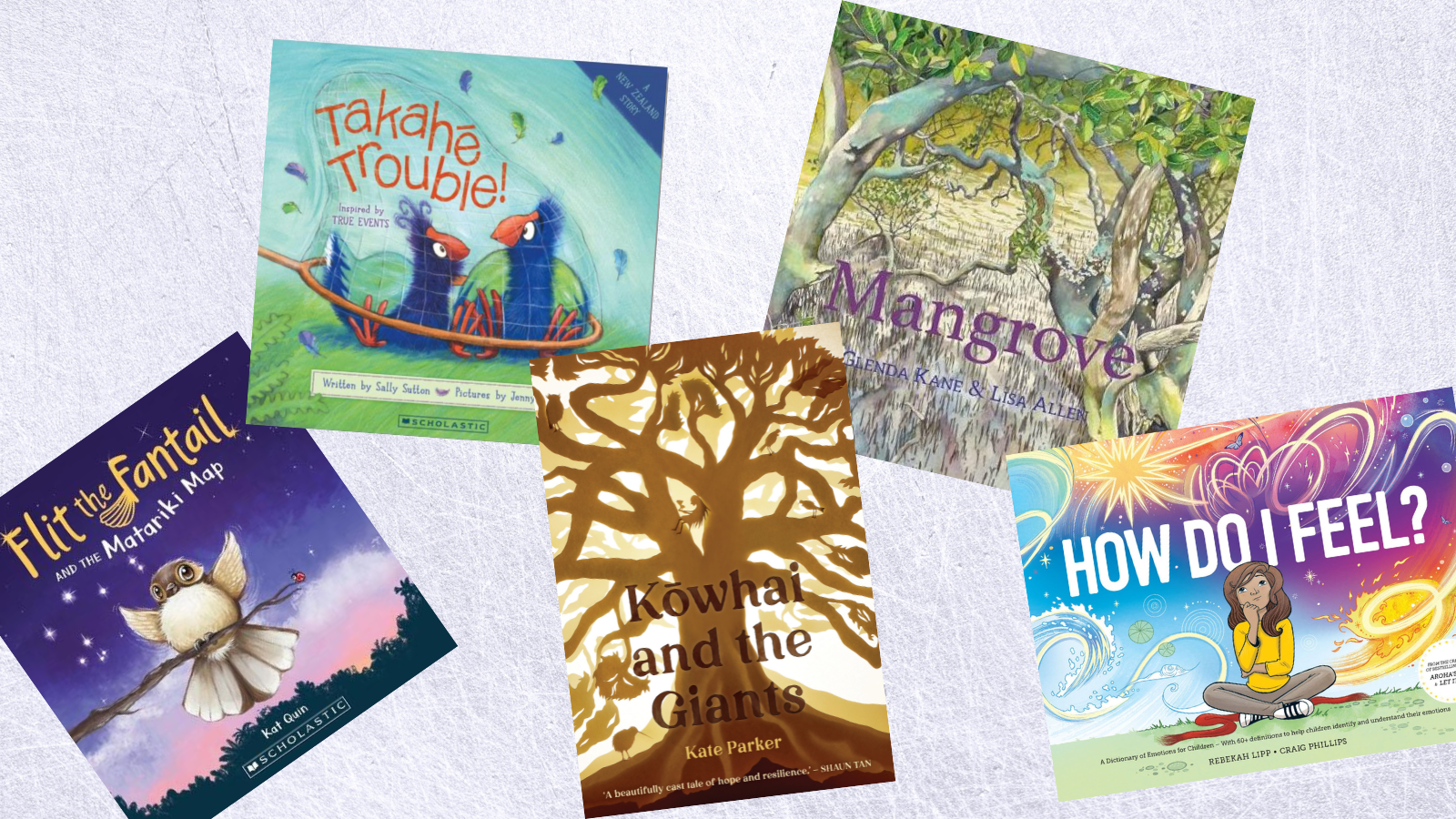
Kōwhai and the Giants by Kate Parker (Little Love)
The magic of this stand-out book is in the depth of understanding Kate Parker has for the subject matter and the way that knowledge and care sits quietly beneath the simplicity of a well-told tale.
Kōwhai is the central character: a tree nymph, a magical soul who ‘first appeared from the golden glow of a beautiful flower‘. She feeds the tall trees and is friends with the birds. We learn about the first visitors to Aotearoa through her eyes—both those who followed the stars and others who followed their greed.
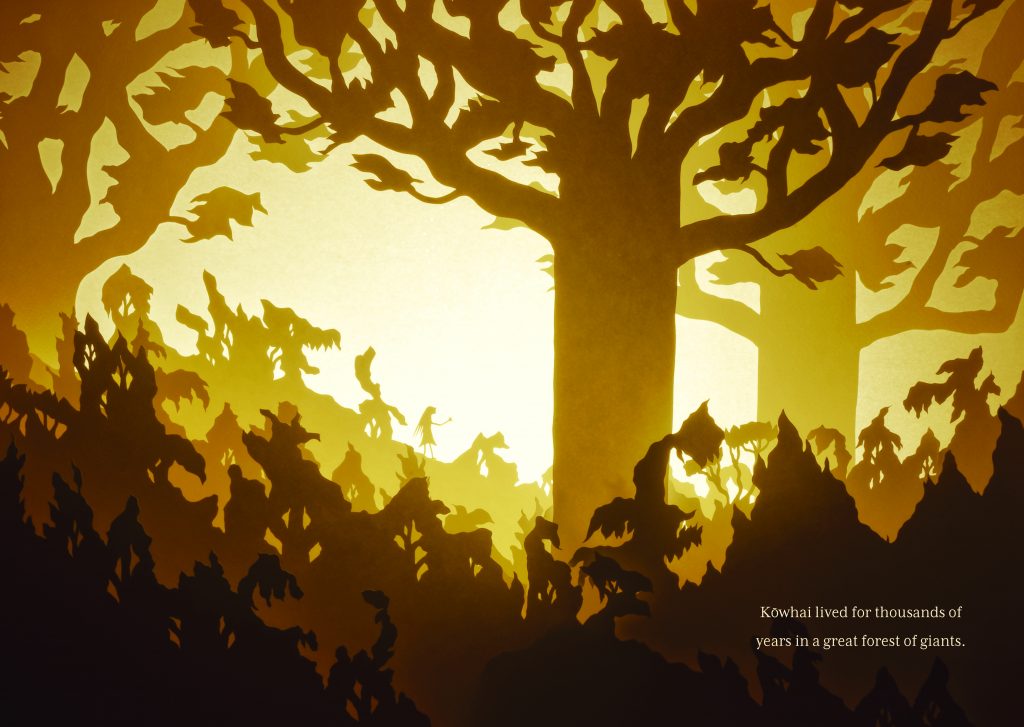
‘Kōwhai called out, and her voice was
mist and rushing wings.
Some heard her. Others did not.
She held her arms wide, but she could
Not stop the great giants from falling.’
The trees need Kōwhai’s help and she gives it, planting their seeds and finding others who will listen and help. This is a story that has roots in our history and grows branches of hope that will reach the ears of the next generation of kaitiaki.
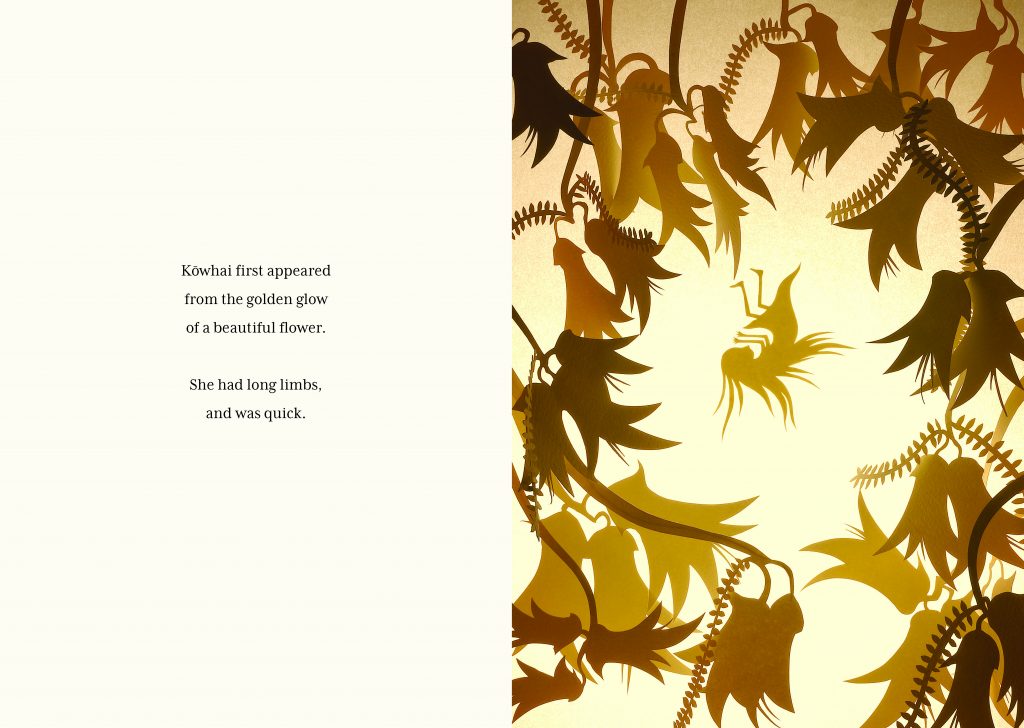
‘Kōwhai called out.
and her voice was the rain
and the sea
and the cry of a bird.’
The illustrations are special; they began life during an artist’s residency and were created as light box pictures made from hand-cut paper. They glow through their minimalist colour palette, and they captivate with a narrative all of their own.
Kōwhai and the Giants is special, a story of resilience, hope and the promise of a tiny seed.
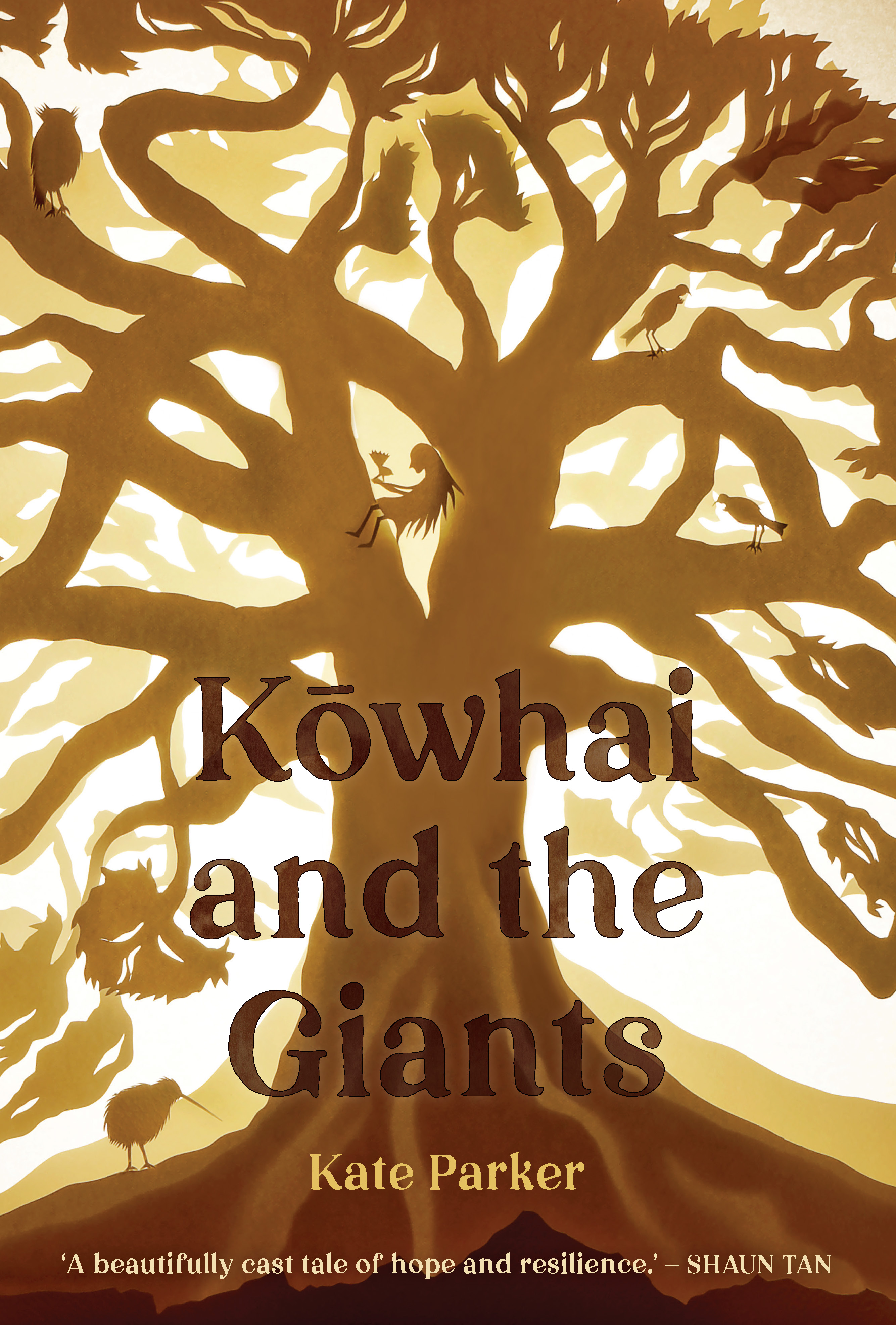
Flit the Fantail and the Matariki Map by Kat Quin (Scholastic NZ)
This book is super cute and charming but it also packs in a heap of cool lessons. Written and illustrated by Kat Quin, the tale takes two Aotearoa taonga, the fantail and Matariki, and leads its little readers through a night of discovery.
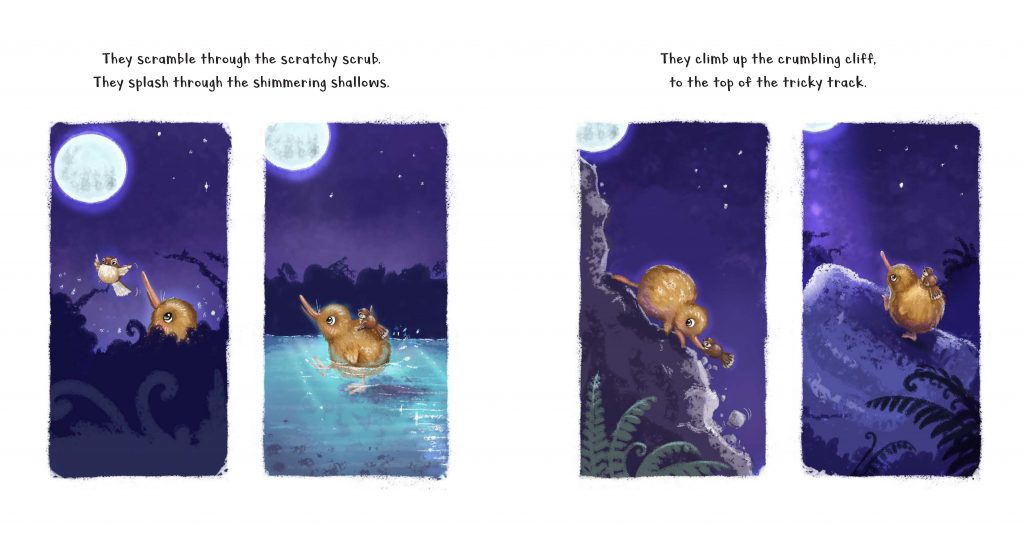
Flit the fantail should be asleep but is instead intrigued by the ‘luminous moon near the horizon.’ He decides that capturing its glow to light up his nest is a good idea and sets off to explore the night skies.
‘Flit gazes back, high up to his nest.
He notices a cluster of nine sparkling stars.
They are shining brightly above his home.’
The book weaves a lovely introduction to Matariki with some reo mixed in and some other feathered characters featuring too. Wise old Ruru is the one who dishes out some knowledge as Flit and Keri the Kiwi gaze up at the night sky.
”Matariki stars signal a new year
or a change of season,’ she says.
‘And sometimes, those special stars
Can even help guide us home.’
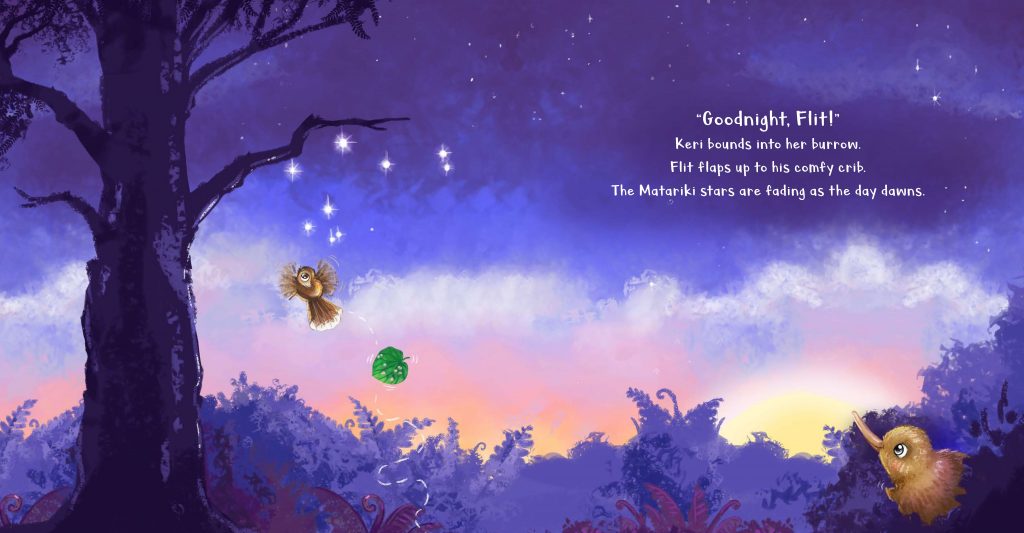
The illustrations are so magical with a moody colour palette of purples and sunset shades. When the narrative speeds up, so does the picture layout and a storyboard style adds in some cinematic detail.
This is the third book in the Flit the Fantail series and so if your kid gets hooked and you are made to read this twice every night, don’t worry: you can grab some back-up!
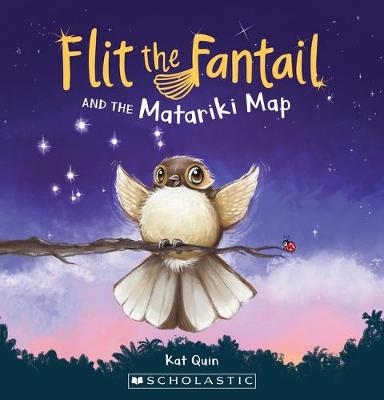
Takahē Trouble! by Sally Sutton and Jenny Cooper (Scholastic NZ)
Kids love adventures and they also love books that have plenty of fast-paced goings-on. Takahē Trouble! delivers on this with a bright little tale that encourages us to see and do new things while also helping us to appreciate what we have right at home. Based on the real life adventure of two Takahē, Walter and Manaaki, Takahē Trouble! tells the story of escape, rescue and returning home.
Manaaki is the initial troublemaker. Bored and dreaming of life on the other side of his predator-free fence, Manaaki talks the apprehensive Walter into sneaking out into the big wide world.
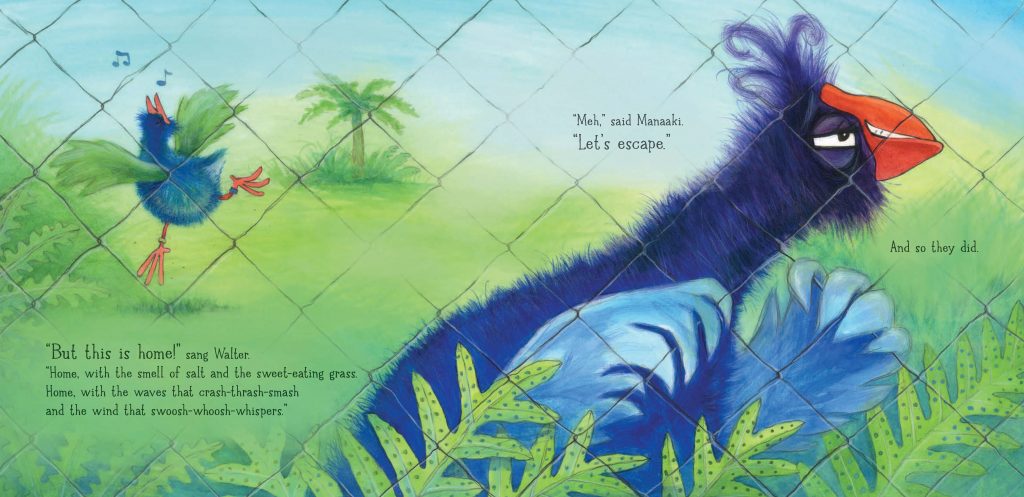
‘”I want to see a cat,” said Manaaki
“And a dog. And a stoat! I want to peek
through dangerous doorways and dip my
Toes in weird water and nibble foreign food
You up for it?”
“No.” said Walter.
“Oh come on, Walt. Shake up your feathers.
Live a little!”’
Manaaki successfully convinces Walt to live a little and Jenny Cooper’s simple and characterful illustrations capture all their expressions along the way. People play a minor role in this story, with the birds taking centre stage, but the humans eventually offer up the means for getting back home when Manaaki decides that actually, it’s not so bad after all.
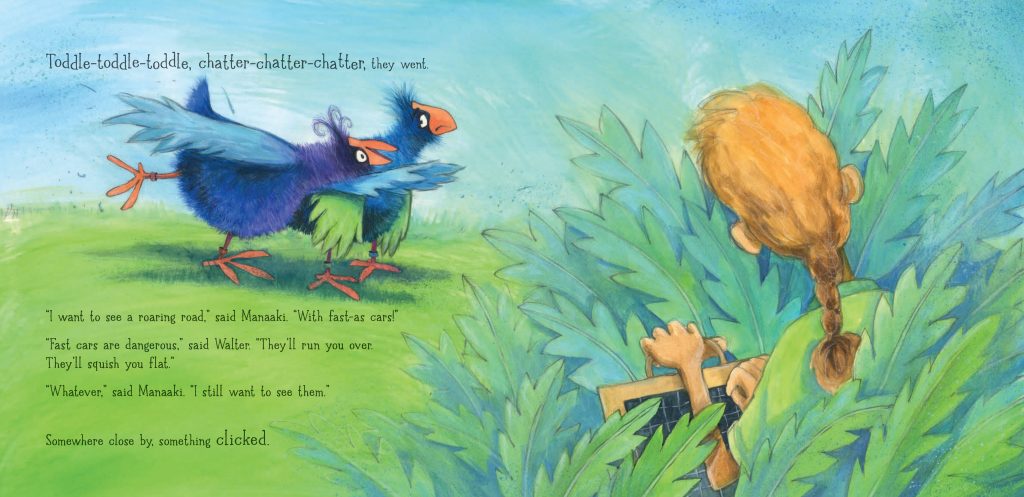
‘”That was a great adventure.” said Manaaki, “but home is best.
Home, with the smell of salt and the seet-eating grass.
Home, with the waves that crash-thrash-smash and the wind
that swoosh-woosh-whispers. Let’s stay here forever.”
A gorgeous story told well, and with the inclusion of some Takahē facts on the back page—snuck in like carrot in the bolognese—this one’s a winner.
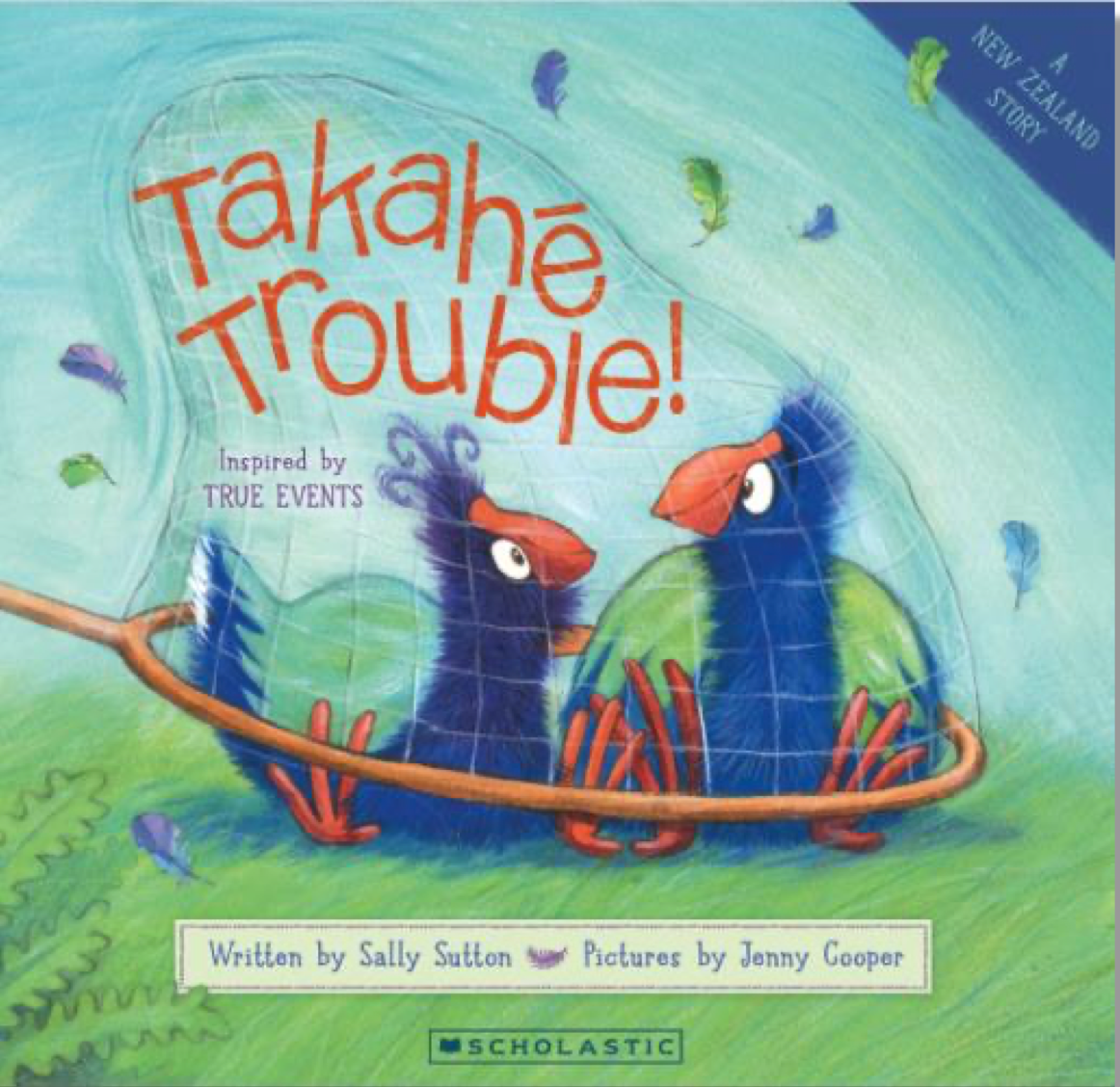
How Do I Feel? by Rebekah Lipp & Craig Phillips (Wildling)
Oh, this book! It is exclamation mark and hyperbole worthy—this book is a gem. Basically, How Do I Feel? is a dictionary of emotions for children, a reference book that helps them identify and understand their emotions. But it is much more as well. How Do I Feel? lets our young people be seen. It gives each big feeling voice through illustration and a whole dedicated page to describing inside things—things that can be hard or great or confusing.
Because being a kid or a teen is tricky sometimes right? They are learning, growing, changing and feeling fast and this book is a gift, a pause, a moment of feeling understood.
I’m jealous, to be honest and I wish there was an adult version of this gorgeous book, but as I have, I encourage parents to also use How Do I Feel?. My favourite spread is ‘Curiosity’, where a quizzical looking kid in a dinosaur onesie is knelt down reaching out to a golden thread of light.
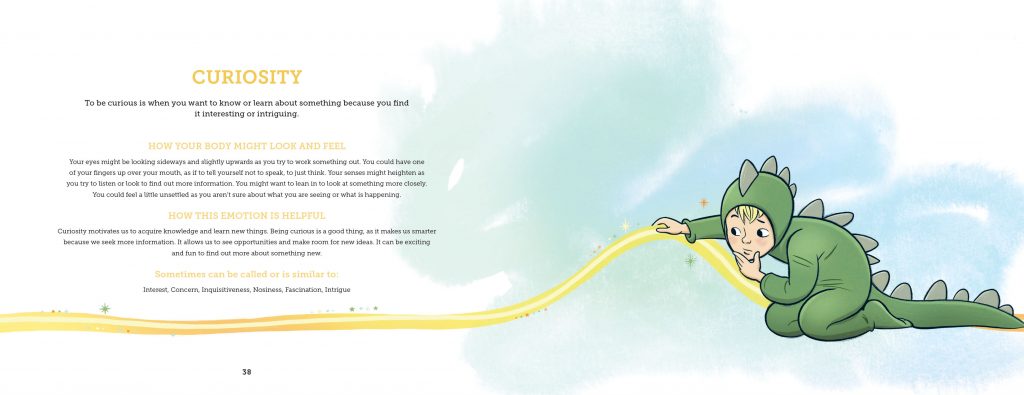
Yahoo to the curious kids and to this book for seeing them! This book is weighty, it is rest-on-your-lap heavy and so it should be—there are a lot of different things that we as humans feel and they are all covered here. The golden thread motif that runs through the Curiosity spread winds its way through the whole book, tying our emotions together in a way that says ‘hey, it’s okay to feel all the things’.
There are some little pointers to what we can do when uncomfortable emotions visit but these aren’t loaded on heavy—the tone is spot on. And the design is great too—the book could be used as a pointer tool for younger kids to look at the illustrations and say ‘that’s how I feel’, or the older kids might pick it up in their own time and in their own way.
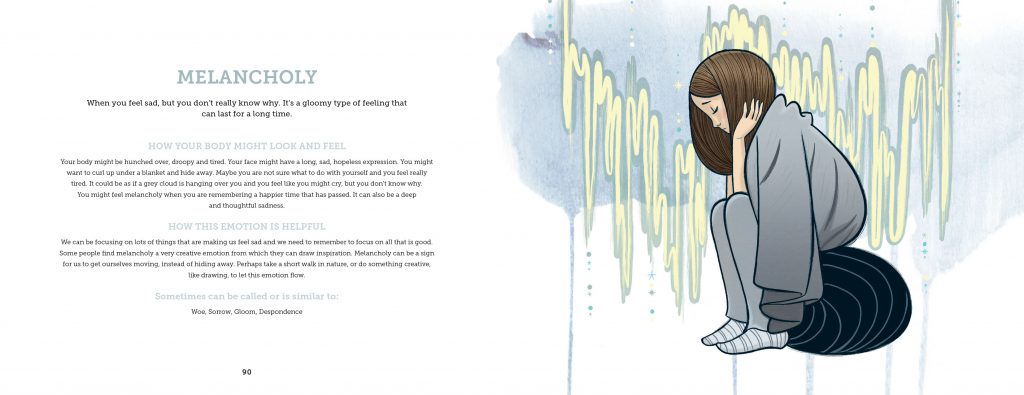
And I hope that, like in my household, this book is on high rotation between kids and carers and that it pops up on as many school desks, family bookshelves and bedside tables. It gives our young people the language to express how they feel and what a gift that is.
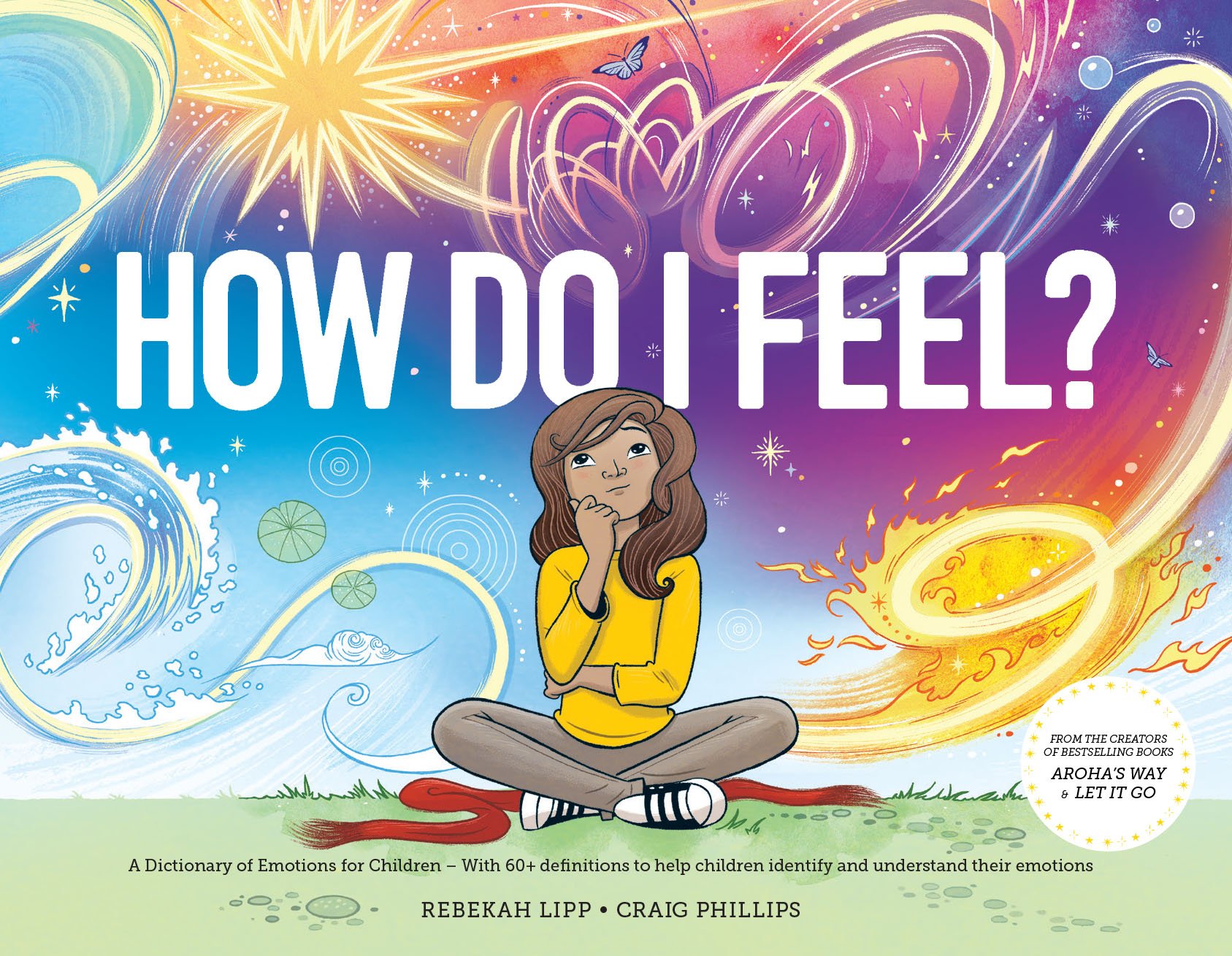
Mangrove by Glenda Kane and Lisa Allen (Bateman)
There are some great big things being said in this beautiful picture book, but they are told in a way that speaks to our little people—our new generation of kaitiaki.
Author Glenda Kane has made the mangrove the hero here and the first part of the book helps us to get to know just who this humble mud-dweller is.
‘The mangrove knows that the tide comes in
and it knows that the tide goes out again
It knows that this happens twice a day
and the mangrove likes it just this way’
There is a bit of science cleverly popped in, hidden like the mangrove—we learn about tidal flats, what makes mangroves special and what creatures live there. Glenda is a former journalist and the clarity with which she is able to say a lot with a little is a nod to her honed skills. The words she has chosen are just right and she guides her reader to see, hear and smell.
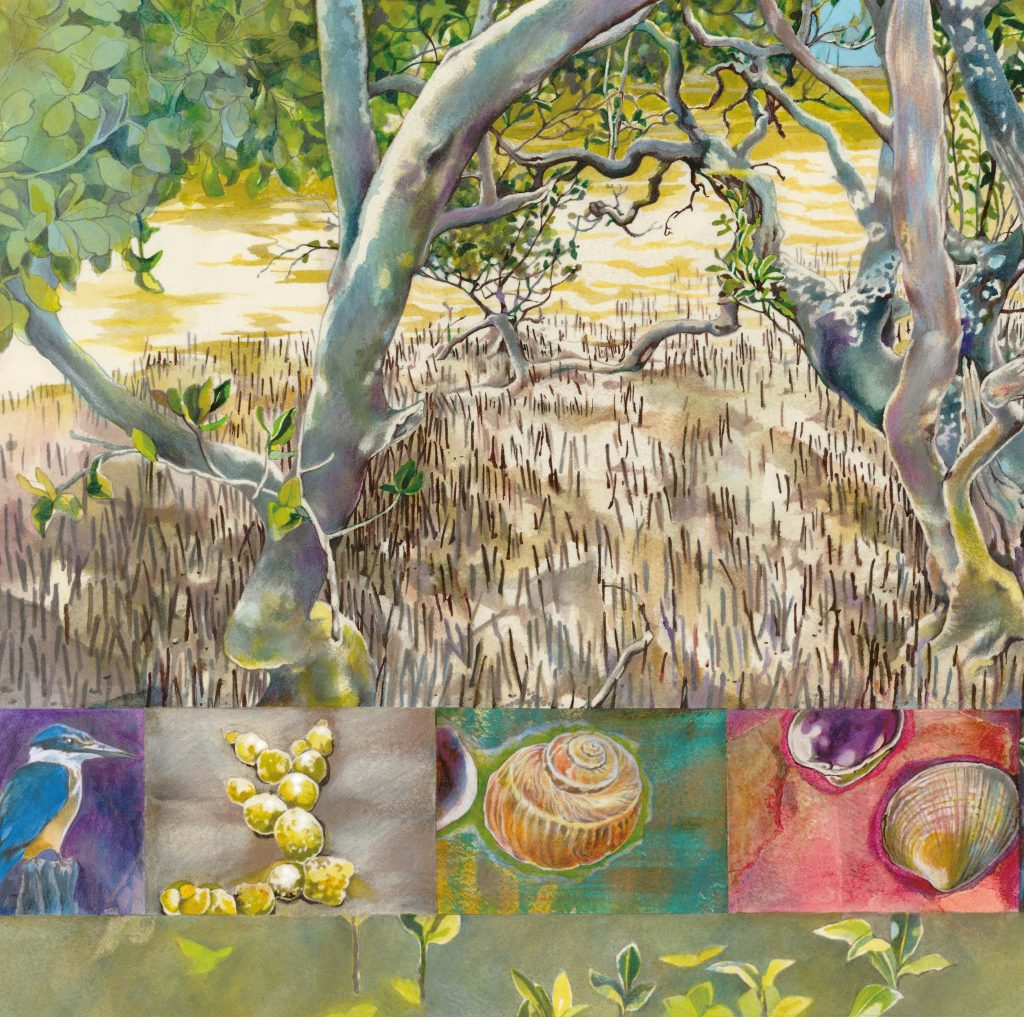
The illustrations, like in any good picture book, take the words on the page to the next level—to where beauty and wonder capture our little readers with intrigue. Illustrator Lisa Allen uses watercolour fluidity and pastel and gold tones to create some magic. The pictures are full of movement and quirk and Lisa has a neat way of composing things—a crab on the left of the page leads our eye to a fish diving deep on the next. Lisa’s background in textile design shines through and many of the pages are worthy of a frame.
The colour palette of the book changes with the flow of the narrative—the mangrove is under threat—and a pair of black gumboots worn by a man who ‘stands and sneers’ changes the mood to dark tones.
There is a beautiful pause at this point in the book which is so clever. A two page illustration which gives space for our tamariki to think and feel, for them to process what this all means. A shopping mall where once there was a thriving ecosystem of mangroves—that’s a big reality and one that isn’t rushed or shied away from in Mangrove.
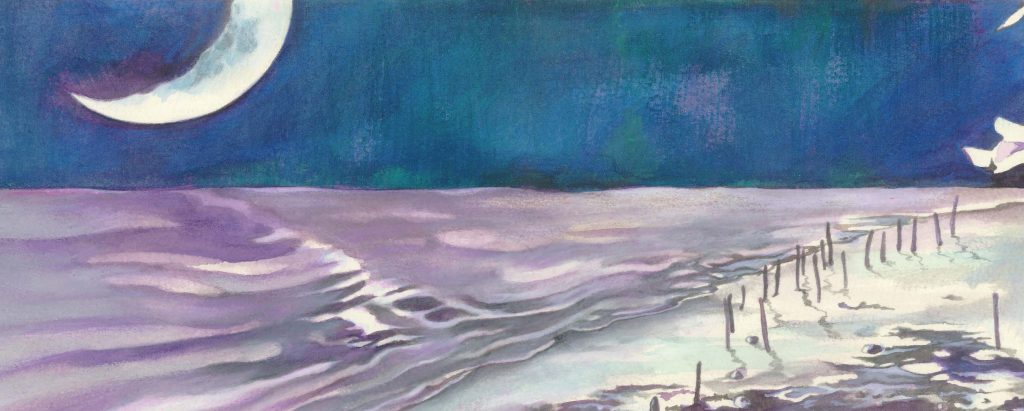
There is a happy ending, yes the mangrove dies but first ‘a green leather pod drops from the tree,’ the mangrove after all is the hero of this book and it saves itself in the end.
‘…the same sea laps on a distant shore
where life is about to begin once more’
This book is gorgeous and necessary, the nurturing of empathy for the whenua in our children is needed more than ever and I applaud Glenda and Lisa in creating this taonga.
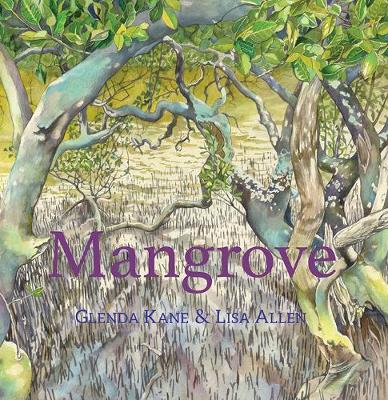

Carly Thomas
Carly Thomas is a freelance writer living in rural Manawatu. She juggles a list of writing gigs that can get wonderfully eclectic.



